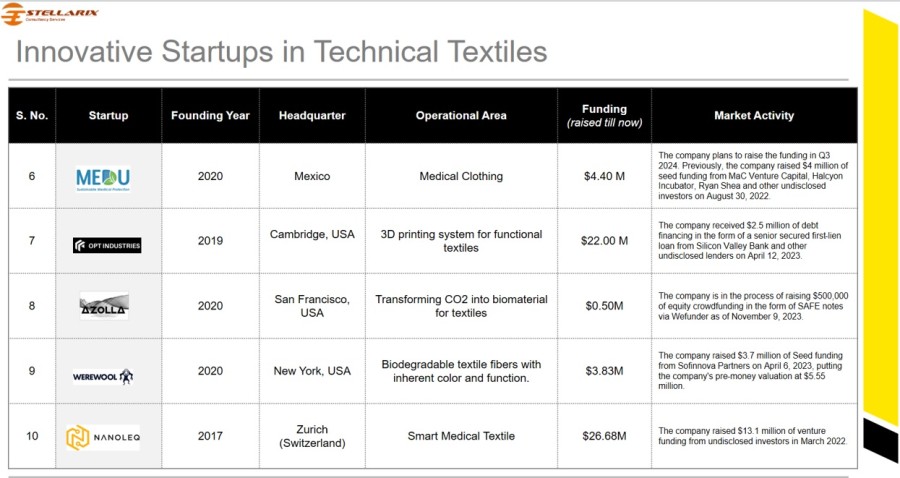Technical textiles are products incorporated with technical performances and additional functional properties. These textiles are of different types, such as functional, invisible, industrial, and many more. These fabrics contain different properties such as anti-bacterial, anti-odor, flame retardant, chemical resistant, stain proof, etc. Though technical textiles account for 30% of the global fabric market, their importance doesn’t go unseen. The functional importance in some fields is in the form of firefighter uniforms, bulletproof vest fabric for army officials, radiation resistance for medical practitioners, etc.
The main key driver for the growth of the technical textile industry lies in the growing awareness among the population due to large companies’ own interest and the increase in advertisements via social media, newspapers, and television commercials. Government support plays a crucial role in the growth. More regulations supporting research and new technology aspects in the fabric market improve the growth.
There has been a continuous change in energy efficiency compared to the 1970s and 80s. Though there is a rigorous energy change, the building construction remains the same. Due to this, the increase in energy has led to heat leakage problems in their walls. To overcome this, a collaboration between Jefferson and Lightweight Manufacturing has come up with a designed textile “skin” that can easily cover the building gaps to improve energy efficiency. This is also an inexpensive technique. This project was funded with $69,000 from the Pennsylvania Department of Economic Development Grant and is still under the prototype stage.
This fabric will be applied to the building’s exterior, helping to improve energy efficiency, insulation, and airflow. This fabric will be in modular panels, and the windows will be uncovered or covered with a translucent plastic sheet. These panels will be fixed on buildings using existing structures so that the waterproofing layer is unaffected.
Complex Process
The steps involved in combining various properties in the fabric also increase. The fabric developed, e.g., must be soft, fire resistant, durable, and have a good color scheme. All these properties involve complex mechanisms that must be continuously addressed with new technology and more focus on R&D.
Environment Concerns
With the growing textile industry, the daily use of machinery has increased noise pollution, air pollution, etc. To maximize productivity and smoothen the supply chain, steps taken can create an issue with environmental norms and regulations.
Increase in Hazardous Waste
Due to the increase in fast fashion, the demand for continuous change in fashion fabric has increased waste generation. The development of new technologies and continuous experimentation with various chemicals has increased hazardous chemical waste.
- The advancement in technical textiles has led to many innovations by start-ups at a global level. The newly developed textiles constitute various properties such as eco-friendly, light, easy to develop, long durability, variations, etc.
- Alpha Femtech, a Hungarian-based startup, has created a fabric that eases period pains. The proprietary Artemis helps produce micro-vibrations that help regulate body heat. This bodysuit is connected to an app that measures pain intensity and accumulates data for gynecologist consultation and analysis.

Figure: Startups in technical textiles, operational areas, funding and market activity
- Uwila Warrior, an undergarment manufacturer, partnered with CICLO, an industry leader in sustainable solutions for synthetic fibers, to launch a collection of briefs, camis, etc. produced with Ciclo technology
- Lenzing Group and Kentaur joined hands to develop a pilot collection of circular workwear for chefs centered around durability and functionality utilizing 50 percent TENCEL™ branded lyocell fibers with REFIBRA™ technology and 50 percent recycled polyester
- Highlights on Technical Textiles
- Innovations
- Challenges & Solutions
- Innovative Startups & Profiling
- Recent Partnerships
- IP Trends
- Stellarix Research in Textiles
- Stellarix Recommendations and Assistance